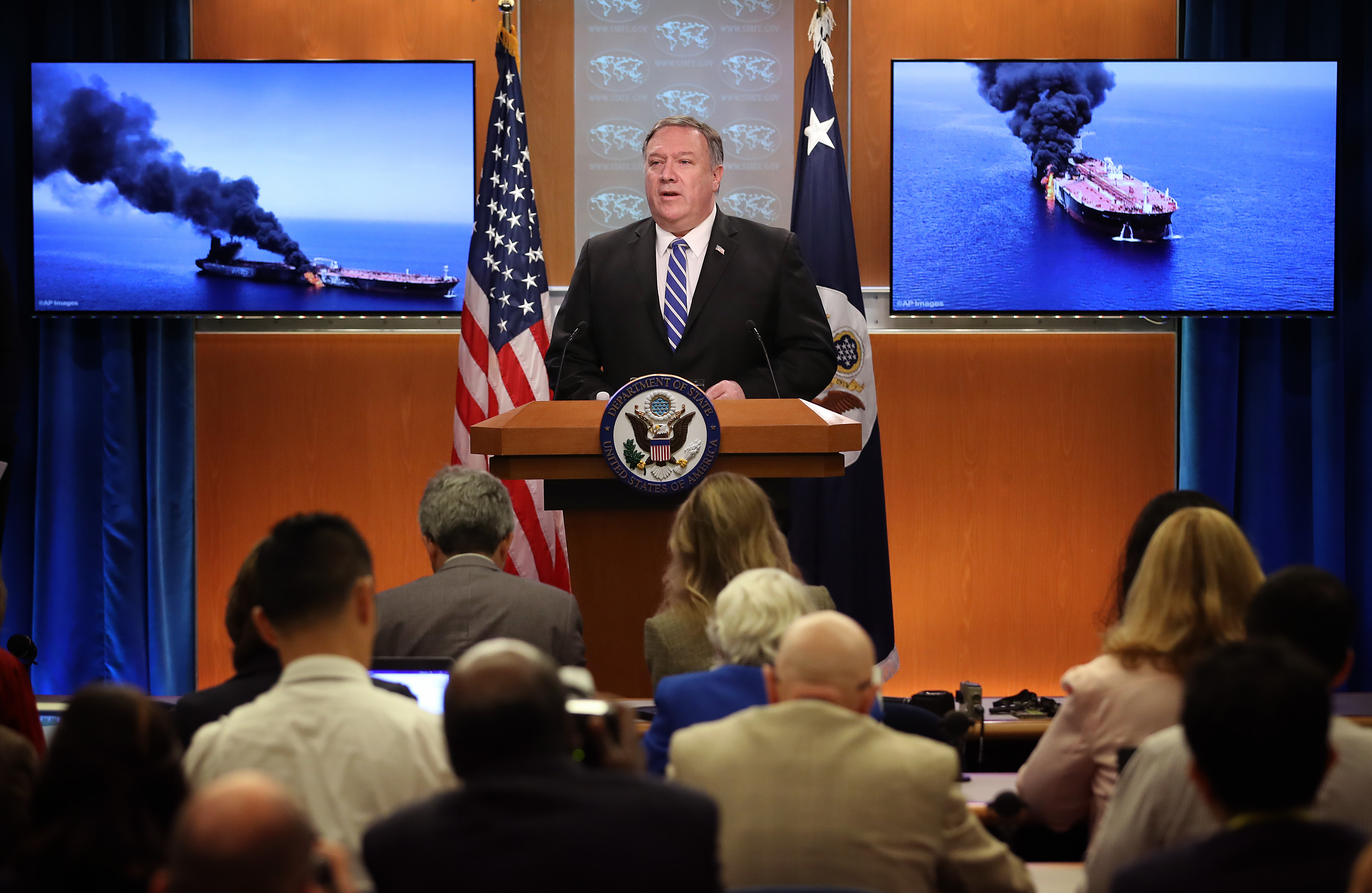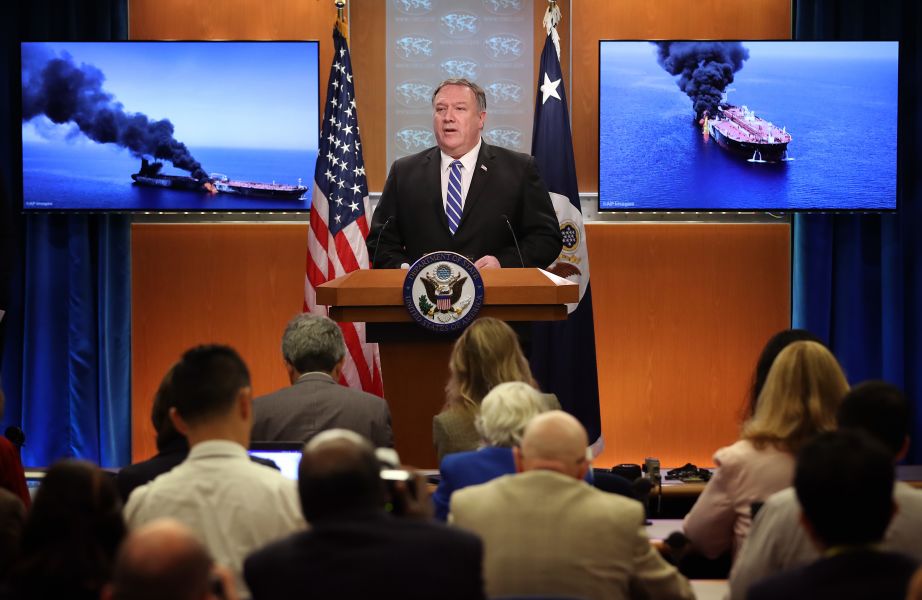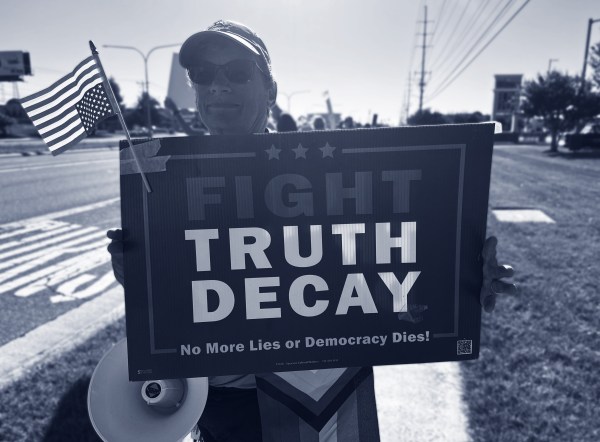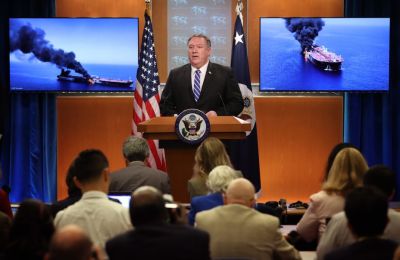Happy Friday.We had a whole other, entirely different Morning Dispatch ready to go for you Thursday evening, but there were some major developments in the Middle East overnight. Our analysis of Q4 fundraising numbers will have to wait!
Quick Hits: What You Need to Know
Former Mayor of San Antonio and Obama administration Housing and Urban Development Secretary Julián Castro ended his presidential campaign on Thursday, telling supporters he “determined that it simply isn’t [his] time.”
The remaining presidential contenders have begun releasing their Q4 2019 fundraising results. President Trump raised $46 million from October 1 to December 31, while Bernie Sanders led the Democrats with $34.5 million. Pete Buttigieg brought in $24.7 million, and Joe Biden rebounded from a dismal Q3 to raise $22.7 million.
The Turkish parliament voted to send ground troops to Libya as President Erdogan continues to expand his role in the region.
In a move designed to reduce youth vaping use, the Trump administration announced a ban on all non-menthol- or tobacco-flavored vape and e-cigarette cartridges. The prohibition comes just weeks after Congress raised the legal smoking age to 21.
Wall Street wrapped up its strongest year since 2013 on Tuesday, with the Nasdaq Composite and S&P 500 growing at their greatest rates in more than half a decade.
David Stern, commissioner of the National Basketball Association from 1984 until 2014, died on Wednesday after suffering a brain hemorrhage last month.
A Major Escalation With Iran

On Thursday night, a statement from the Pentagon confirmed that the United States had taken “decisive defensive action” to kill Qassem Suleimani, the longtime leader of the Islamic Revolutionary Guards Corps’ Quds Force, for decades the leading facilitator of regime-supported terror operations. The Iranian general was killed as he traveled in a convoy near Baghdad International Airport with other senior officials linked to Iran’s military and external terror networks.
The Pentagon statement described the action as both retaliatory and preemptive, noting that Suleimani “was actively developing plans to attack American diplomats and service members in Iraq and throughout the region” and had orchestrated attacks on U.S. bases in Iraq, including the attack on December 27 that claimed the life of a U.S. government contractor. The statement also noted that Suleimani approved the attacks Tuesday on the U.S. Embassy led openly by terrorists backed by Iran.
According to sources familiar with the deliberations, discussion among senior administration officials about targeting Suleimani began immediately after the December 27 attack, which was quickly attributed to Iran-backed operatives. Trump’s national security team had debated killing Suleimani before, on several occasions, but Trump resisted advice to target the Iranian general, often described as Iran’s second most important leader. That posture changed with the attack by Kataib Hezbollah late last week, followed by the brazen and provocative attacks on the U.S. Embassy Tuesday morning, directed by Iran-backed terrorists who gave media interviews as operatives set fires. By Tuesday afternoon, top Trump advisers understood that a response targeting Suleimani was imminent.
It’s hard to overstate the significance of Suleimani’s death, both because of the terror it ends and the response it almost certainly portends.
Qassem Suleimani was responsible for the deaths of hundreds of Americans in Iraq and beyond. The State Department puts the official figure at 603, the Pentagon slightly higher. Senior U.S. military sources tell The Dispatch those estimates are low and do not include attacks where there was any doubt about attribution. Suleimani was likewise responsible for much of the terror and instability the Iranian regime used to shape the region, including operations in Yemen, Afghanistan, Lebanon, and Syria.
The response to Suleimani’s death came swiftly. Iran’s supreme leader, Ayatollah Ali Khamenei, announced three days of mourning and promised “severe retaliation.” A former IRGC Commander promised “strong revenge” on America.
The Washington response was predictable. Trump tweeted out a picture of an American flag (and only a picture of an American flag). Republicans commended the administration’s decision as a justified response to the hundreds of American deaths at Suleimani’s hands, Democrats roundly criticized it as reckless and a potentially unauthorized act of war.
Who Was Qassem Suleimani?
In the days after Ayatollah Ruhollah Khomeini overthrew the shah of Iran in 1979, a 22-year-old Qassem Suleimani enlisted in the Revolutionary Guard. In the ensuing conflict with Saddam Hussein’s Iraq and subsequent attempts to export the revolution to the surrounding region, he quickly distinguished himself as a zealous fighter and charismatic leader.
In 1998, Suleimani took over as leader of the shadowy Quds Force, the branch of the Revolutionary Guard tasked with carrying out clandestine operations outside the borders of Iran, including by buttressing regional terror groups like Hezbollah and Hamas. It was due in large part to Suleimani’s leadership, as the head of a sweeping network of proxy organizations and political parties throughout the Middle East, that Iran managed to acquire such outsize regional influence throughout the 1990s.
“No one in Tehran started out with a master plan to build the Axis of Resistance, but opportunities presented themselves,” a Western diplomat told The New Yorker in 2013. “In each case, Suleimani was smarter, faster, and better resourced than anyone else in the region. By grasping at opportunities as they came, he built the thing, slowly but surely.”
As the U.S. presence in the region grew after the 9/11 attacks, Suleimani and his Quds Force proved a determined and deadly foe. When the U.S. invaded Iraq, the Quds were there to arm Iranian militias to fight us—killing hundreds of U.S. soldiers during that war. At times, Suleimani even set himself up as the personal adversary of the U.S. commanders in the region. In early 2008, while fighting Shiite militias in Iraq, Gen. David Petraeus was relayed a text message from the Quds leader: “General Petraeus, you should know that I, Qassem Suleimani, control the policy for Iran with respect to Iraq, Lebanon, Gaza, and Afghanistan. And indeed, the ambassador in Baghdad is a Quds Force member. The individual who's going to replace him is a Quds Force member.”
All the while, Suleimani was working tirelessly to pull off dozens of smaller-scale destabilizing actions and attacks. Some of these were direct affronts to America—such as destroying oil tankers in the Persian Gulf and shooting down a U.S. drone last year—while many more were simply attempts to project Iranian force and re-cement Tehran’s status as the region’s central power. Through it all, Suleimani maintained a reputation as a ferocious and ruthless military commander, a folk hero to the regime’s loyalists. Last April, Secretary of State Mike Pompeo said he viewed Suleimani as a threat on the level of Abu Bakr al-Baghdadi—the ISIS commander who was slain in October.
What Precipitated This Move?
Trump often acts rashly, responding to aggressors—both real and perceived—hastily and harshly. But that’s not what happened here.
Pro-Iranian militias have been prodding the United States for months, launchingrockets at American forces in Iraq. No single event triggered the killing of Suleimani; he’s been on ourradar for more than a decade (literally, intelligence agencies have tracked his location for years).
Early Tuesday morning, employees of the American Embassy in Baghdad faced an ambush from hundreds of militiamen and protesters in what Pompeo referred to in an interview with CBS’ Major Garrett as “Iranian-backed terrorism.” Although the main embassy building was not breached, the outer rim of the compound was. Windows were shattered, graffiti sprayed, fires lit.
But the siege didn’t last long. The United States responded to the unrest quickly and with strength; 100 marines and a handful of Apache helicopters secured the embassy, dispatching 750 soldiers to the region from the 82nd Airborne Division, with more potentially on the way. Although Iraqi security forces had initially failed to stop the violent protesters as they marched toward the compound, the Iraqi government later deployed forces to the embassy as part of its obligation to protect those there. The assailants were gone by Wednesday afternoon.
There was little question about who was responsible.
“Iran will be held fully responsible for lives lost, or damage incurred, at any of our facilities,” President Trump tweeted on New Year’s Eve. “They will pay a very BIG PRICE! This is not a Warning, it is a Threat. Happy New Year!”
The protesters charging the embassy were responding to American airstrikes on Sunday that killed 24 members of Kataib Hezbollah—an Iranian-backed Iraqi militia. Those strikeswere themselves a response to a December 27 rocket attack in Kirkuk that killed an American contractor and injured several US and Iraqi service members.
But this rapidly mounting tit-for-tat between Iran and the United States stretches back much further than this week.
“The near-term cause of [the protests at the embassy] was a response to the airstrikes, but those airstrikes have to be put into context of a longer term problem, which is that the U.S. basically ceded a lot of power and influence to Iran inside Iraq.” Thomas Joscelyn, senior fellow at the Foundation for Defense of Democracies, told The Dispatch in an interview conducted prior to the Suleimani news on Thursday. “[This] was an organized effort by these Iranian-backed militias, Iranian proxies to try and gin up anger and to respond to this American airstrikes on their own people.”
Were they successful? “They caused us to scramble military assets,” Joscelyn said. “But I think at the end of the day, the actual damage they did was fairly limited and they didn't kill any Americans or get away with anything that they certainly would like to do if they had the opportunity to.”
Tuesday’s Provocation Wasn’t Suleimani’s Only One
Over the past several months, Iraq has seen a wave of non-violent civilian protests focused largely on corruption in Baghdad. Some of those protests included explicit condemnation of Iranian influence in Iraq, with anti-Iran chants and demonstration at Iranian diplomatic outposts in Iraq.
When this discontent threatened to unseat Iraqi Prime Minister Adel Abdul Mahdi in late October, an emissary from the Iranian regime intervened to save him: Qassem Suleimani. It was a short-term reprieve. Abdul Mahdi resigned a month later after rising anti-Iran sentiment culimnated in violent demonstrations at the Iranian consulate in Najaf.
Suleimani and his allies were providing more than political help. Iran-backed militias were actively involved in putting down protests, at times resulting in the deaths of dozens of protesters. In early December, the U.S. Treasury Department designated several Iranian militia leaders for ordering the assassination of protest leaders and other human rights abuses. Among those designated last month was Qais Khazali, an Iran-backed terrorist once held by the U.S. government but freed by the Obama administration in a late-2009 hostage swap. Khazali was one of the militia leaders who helped orchestrate the violent protests at the U.S. Embassy in Baghdad on Tuesday.
If the handling of Qais Khazali illustrates the stark differences in approach between the Obama and Trump administrations, so does the treatment of Qassem Suleimani. As a precondition to the Iranians signing on to the Joint Comprehensive Plan of Action (JCPOA, or Iran Nuclear Deal) in 2015, the Obama administration agreed in principle to lift existing sanctions on Suleimani after eight years, despite his long record of directing Iran’s terror apparatus, including lethal operations targeting Americans, provided Iran abided by the terms of the accord.
What’s Next?
In an interview with Fox News’ Mike Emanuel earlier this week, Pompeo vowed that the United States would “continue to hold the Islamic Republic of Iran accountable wherever we find their malign activity,” a general statement at the time that now reads like a specific warning.
But perhaps the most telling moment in the interview came when Emanuel asked Pompeo about the consequences of a U.S. withdrawal from Iraq.
“What do you think would happen if the United States were to leave Iraq?”
“I don’t want to engage in a hypothetical,” Pompeo responded, pledging only that the United States would make good on Trump’s promise to keep ISIS from attacking the US homeland.
There’s a reason Pompeo didn’t want to answer that question. Pompeo understands that a full withdrawal of U.S. troops from Iraq would be catastrophic. But he also understands that Trump’s instincts pull him strongly in the other direction. The president railed against America’s foreign entanglements during his 2016 campaign and he’s made clear—in public remarks and in private meetings with his national security team—that his patience with America’s “endless wars” is running out.
Iran’s leaders have vowed to avenge Suleimani’s death. They may react quickly or they may demonstrate patience. But they will undoubtedly attempt to make good on those promises. How? Suleimani may have previewed the next wave of U.S.-Iran conflict in a provocative speech he gave in July 2018.
"We are closer to you than what you think,” he warned, boasting of the power and reach of the Quds Force. “You are aware of Iran's power in asymmetric war."
From The Dispatch’s David French on the Constitutionality of the Strikes on Suleimani
Twitter thread here, but we “unroll” it for readers below.
There's much to say about the potential strategic benefits (and perils) of the decision, but make no mistake, separate congressional authorization was not necessary. This was not a separate act of war in the constitutional sense. I'll explain why in a brief thread.
It's very important that Suleimani was killed in Iraq. Why? Because American troops are lawfully in Iraq—there by congressional authorization and with the permission of the Iraqi government. Moreover, they have a right of self-defense. /2
And don't forget, they were reintroduced to Iraq by the Obama administration. The present military operations are a continuation of military operations initiated by President Obama. This is Obama's deployment as much as Trump's. It was proper then, and it is proper now. /3
Iranian-backed militias attacked U.S. troops lawfully present in a combat zone under valid legal authorities. Moreover, America's military response isn't limited to immediate self-defense or tit for tat. It can act to remove the threat. That threat includes enemy commanders. /4
The true "act of war" was thus Iran's—by putting one of its commanders, boots on the ground, in Iraq to assist in planning and directing attacks on U.S. forces. America is entitled to respond to that threat. /5
Suleimani was an evil, evil man. There is much American blood on his hands. And he was killed lawfully, in a properly constitutionally-authorized conflict. There is much risk and peril to come, but Trump's action was constitutionally legitimate, and that matters. A lot.
Worth Your Time
If you want to read more about the life and times of Qassem Suleimani, this deeply reported 2013 New Yorker profile by Dexter Filkins is a great place to start.
President Trump’s cash payouts to “our great patriot farmers” have quickly gone from being an emergency tourniquet on trade war pain to an enormous, apparently regular subsidy—more than the auto industry got in 2008!—with no end to them in sight. This NPR piece from Dan Charles breaks down how that decision has gone largely uncriticized, and created a situation in which the Trump administration is shielding itself from the political pain of its own policies.
AEI’s Nicholas Eberstadt has a new piece in The New York Times on why the North Korean nuclear crisis is, after a brief hiatus, back on and entering a new phase. “The United States’ only option for precluding this nightmare,” he writes, “is to bring down the hammer on the Kim regime before its capabilities expand even further.”
Be sure to read this moving obituary of Gertrude Himmelfarb, the prominent Victorian historian and mother Bill Kristol, from Adam Keiper in The Bulwark.
ESPN’s Adrian Wojnarowski and The Athletic’s David Aldridge are out with two fantastic David Stern obituaries that highlight just how transformative force the former commissioner was not only in American sports but global business.
Toeing the Company Line
David’s got two fresh French Presses for you since we were last in your inbox on Monday. The first takes a look at the role media narratives play in how we talk (or don’t talk) about anti-Semitism, as well as how last week’s church shooting in Texas demonstrated the best of responsibly gun ownership. The second covers the aforementioned raid of our embassy in Iraq, the latest happenings in North Korea, and why “foreign policy should humble us all.”
Reporting by Declan Garvey (@declanpgarvey), Andrew Egger (@EggerDC), and Steve Hayes (@stephenfhayes).
Photo credit: Secretary of State Mike Pompeo speaks from the State Department briefing room on June 13, 2019 in Washington, D.C., addressing attacks on two U.S. tankers by Iran in the Gulf of Oman. (Photo by Win McNamee/Getty Images)






Please note that we at The Dispatch hold ourselves, our work, and our commenters to a higher standard than other places on the internet. We welcome comments that foster genuine debate or discussion—including comments critical of us or our work—but responses that include ad hominem attacks on fellow Dispatch members or are intended to stoke fear and anger may be moderated.
With your membership, you only have the ability to comment on The Morning Dispatch articles. Consider upgrading to join the conversation everywhere.